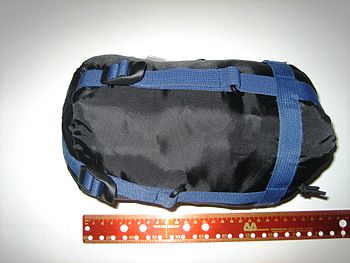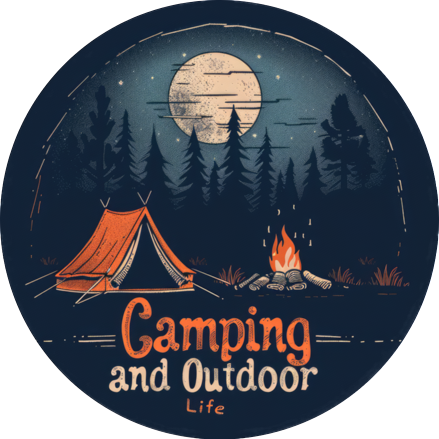The Ultimate Sleeping Bag Buying Guide
Finding the perfect sleeping bag is never easy.

Not only are there so many different sleeping bag options out there on the market today, but most sleeping bags are built for a very specific purpose and with a very specific usage in mind. This is all right if you are exclusively looking to camp in warm weather, are exclusively a backpacker or hiker, or just want something to throw in the back of your Jeep to do a bit of late-night muddling – but what if you want the perfect sleeping bag that that will cover all of those bases?
That’s exactly why we wrote this ultimate sleeping bag buying guide. You might have to make a couple of compromises here and there, but you’ll end up walking away with the perfect sleeping bag for your particular needs.
Let’s dive right in!
Choosing the right type of bag sets the tone
Before you look at anything else (with the sole exception of maybe your budget), you’re going to want to focus on the right type of sleeping bag to get things off on the right foot.
While you’ll find all different kinds of shapes, colors, sizes, and designs available right now, most sleeping bag options fall into three specific types:
Summer sleeping bags
Three season or “all weather” sleeping bags
Winter and extreme weather sleeping bags
Summer sleeping bags are basically designed and engineered to be very lightweight with lower levels of insulation, and seem to be perfect for temperatures right around 35°F and up. These are ideal for those that do not anticipate doing any camping in cooler temps, as well as those that want a relatively simple set up without too many extras. Great as a general-purpose sleeping bag, they also have the added benefit of being very attractively priced.
Three season sleeping bags, on the other hand, are those designed for temperatures anywhere above 20°F and are perfect bags for those early spring and late fall camping trips or nights you’ll be spending outside. A little bit on the heavier side (but still pretty easy to pack away), they have higher levels of insulation and usually include extras like a draft collar, zipper covers, and sometimes even hoods. You can use them in the summertime, but they’re almost a bit of overkill unless you unzip them fully and use them as a top or bottom layer.
Finally, you get to the winter and extreme weather sleeping bags. These bags are definitely on the heavier side (though new insulation and fill types have cut down on the weight dramatically), and come with all kinds of advances to keep you warm in temperatures that get below 20°F. These are the only kinds of bags you’ll want to pack with you when you anticipate temps that are going to cause the mercury to drop below zero. On top of that, they come with all kinds of exterior and interior features that lockout the weather and precipitation, allowing you to sleep comfortably in your own warm little sleeping bag bubble!
Pay attention to the temperature ratings
Though the information about choosing a particular sleeping bag based off of its type is going to be useful when narrowing down all of the different options out there, you’ll want to specifically focus on the temperature ratings that an individual bag has been granted.
Even though there is yet to be a definitive “universal” temperature rating system, almost all major US manufacturers include the:
Highest level temperatures that you’ll be able to sleep comfortably in
Ideal temperatures that you’ll be able to sleep comfortably in
And lowest level temperatures at that you’ll be able to sleep comfortably in
Each of these temps will be represented in Fahrenheit, and also deal only with outdoor temperatures that can change and adjust on-the-fly. Always look to the weather report before you pack your sleeping bag!
Find the perfect insulation and fill material
Sleeping bags up until two decades or so ago (maybe a little bit longer) were made almost exclusively out of down fill material, the same kind of down that you would find in high-end luxury pillows.
Down sleeping bags are also a little bit on the expensive side. Down sleeping bag options will always be rated with a fill number between 600 and 900, with the high numbers offering you higher levels of loft and a much warmer sleeping bag.
Offering a very lightweight insulation material while retaining an extreme amount of heat, the only problem with down as a fill for your sleeping bag is when it gets wet. Once that happens it becomes heavy, compacted, and loses its insulation capabilities.
This is why so many high-end sleeping bags today (and a number of new budget based options) are available using synthetic insulation materials. Offering a slightly lower overall insulation level while staying warm even when completely soaked through, they also are lighter and more streamlined as well.
If you do decide to go with a down sleeping bag option, make sure that you invest in a waterproof exterior or at least a “rain bubble” that you can slide it into should the weather turn south. Otherwise you’re going to have nothing more than a wet lump of material to sleep in, which is almost worse than having no sleeping bag at all!
Choosing your sleeping bag shape
Now it’s time to begin looking at the different shapes that modern-day sleeping bags come in.
While almost all manufacturers have unique dimensions for their particular sleeping bag options, you’ll find that there are three major shape types that you have to choose from:
Mummy
Exactly what it sounds like, this kind of sleeping bag is going to make you look as though you are ready to be stuffed in a sarcophagus in ancient Egypt!
Very efficient because of the close fit to your body, the interior space in a mummy sleeping solution is dramatically smaller than the other options. This allows it to heat up and retain that level of high heat much faster and longer than other forms. On the downside, it can be a little bit on the constricting side of things, and if you struggle with claustrophobia you’re probably not going to be in love with the shape.
Rectangular
Pretty much what sleeping bags looked like ever since the first one was invented and up until the mummy bag was created, this looks like a blanket that has been folded in half with zippers attached on three sides. Perfect for those that are looking for a larger bag solution or something that offers that bit of extra room that a mummy bag never would, they aren’t quite as efficient as a mummy bag and more suited to warmer weather applications.
Semi-rectangular
More of a “middle-of-the-road” option for those that don’t want to deal with the tight confines of a mummy bag but also want similar high levels of performance that a rectangular bag lacks. These are slightly tapered sleeping bags that are a touch on the heavier side but give you some room to move around in while you sleep.
The ideal sleeping bag for…
General Camping
If you’re just looking for a sleeping bag option to have on hand for the random camping excursion for even just a bit of backyard outdoor sleeping around a fire, you’ll want to look at a rectangular bag with lower thermal ratings and probably one that would fall under the “summer” type.
Winter Weather
When it comes to winter weather camping (or any condition that threatens extreme weather), you really only have one option – a mummy sleeping bag filled with a synthetic material and as many waterproofing and heat boosting options as you can find!
Backpacking/Minimalist

Those that are looking for a backpacking or minimalist sleeping bag are probably going to want to stick to a semi-rectangular bag that leverages three season fill levels, striking with that happy medium between insulation and weight ratio balance that so many of these types love.
Mountaineering or high-altitude
This is where things get a little bit tricky.
After all, you’re going to want to pack as little as you possibly can when attempting these kind of grueling excursions and adventurist trips, but you need to have something that can protect you from the extreme weather and cold you’ll find at high-altitude.
A lightweight mummy sleeping bag filled with down or a down/synthetic mixture is probably best, though you’ll want to speak to your guide before you make your purchase.
Taking care of your new sleeping bag!
Now that you found the perfect sleeping bag for your particular needs using the quick guide above, it’s time to focus on making sure that your investment pays off for years and years to come.
Here are just a couple of quick tips you want to pay attention to when it comes to cleaning, caring for, and maintaining your new bag!
Read the instruction manual
While it might seem a little bit silly on the surface to read the instructions or the tag provided on every sleeping bag out there, you’ll gain critical insider information for using, washing, drying, and caring for your bag from this 100% free resource.
Most bags need to be hand washed (or at least spun on a very, very gentle cycle) and should only be dried out on the line or on low heat in a dryer that can accommodate its size and weight when wet.
Store your bag in as close to its normal size as possible
You’re going to want to do everything you can to avoid storing your new bag in that tiny little nylon sack they almost always come shipped in. This is going to compact the fill levels unevenly throughout the bag, resulting in hot spots and cool spots that you wouldn’t have had to deal with otherwise.
Try to wrap it in a pillowcase or oversized sheet and make sure that you store it in a protected container to keep mice, bugs, and insects out of your little sleeping sack.
So long as you treat your new sleeping bag with respect you should be able to enjoy this investment for years and years to come!






